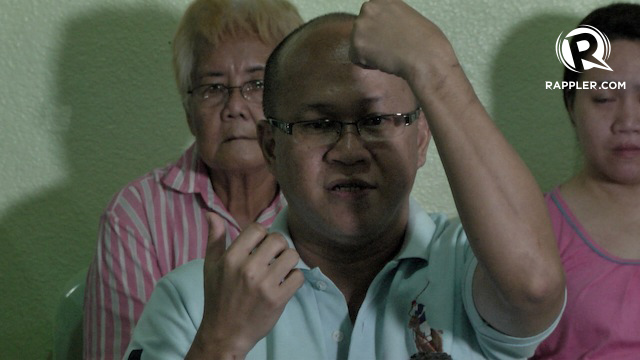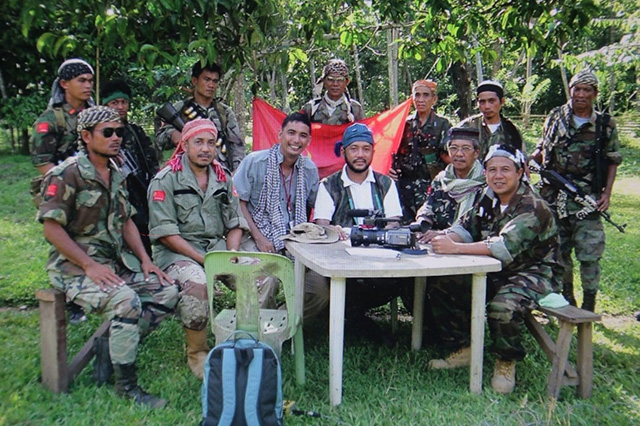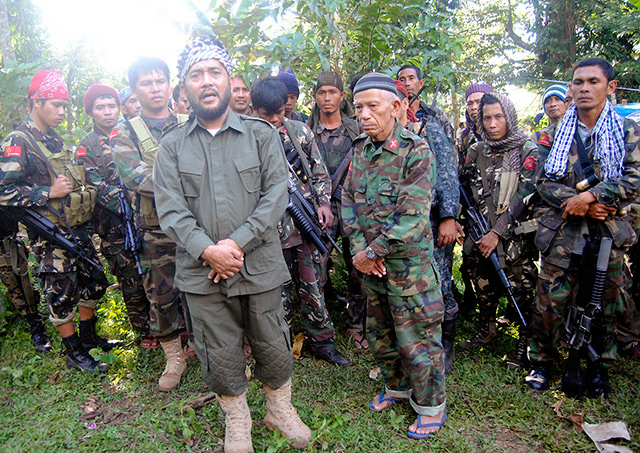
The Moro Islamic Liberation Front (MILF) in its sincere desire to participate in a democratic process through the ballots will join the political exercise in 2016 if the peace process will result to the signing of the comprehensive compact.
In a Seminar on Political Party Building last September 16-19, 2013 sponsored by the Germany-based Konrad Adenaur Foundation (KAF) in partnership with the Institute for Autonomy and Governance (IAG), the Institute of Bangsamoro Studies (IBS) and the MILF, Al Mansoor, BIAF Chief of Staff and Chairman of the MILF’s Interim Committee for the Formation of the Bangsamoro Political Party, hailed the seminar as “a first of its kind since the birth of the MILF. “This only goes to show that we are now gearing towards ballots instead of bullets,” Al-Mansoor added.
The activity was held at the Bangsamoro Leadership and Management Institute (BLMI) training hall, Simuay, Sultan Kudarat, Maguindanao and attended by 42 Front’s officers from various areas in the proposed Bangsamoro Region.
In published report at the website of the IAG dated September 19, it said that political officers sat down in a four-day seminar geared towards boosting the rebel group’s bid of forming its own political party.
The event brought experts and specialists that included Dr. Peter Koepingger, KAF Resident Representative in the Philippines who delivered inputs on national and local politics, political party building and management, and government systems with focus on parliamentary system, the targeted form of government for the envisioned Bangsamoro region in the Philippines, said the report.
As agreed in the Framework Agreement (FAB), the envisioned Bangsamoro Region shall have a ministerial form of government; hence an electoral system suitable for the new government shall also be established. The system is seen to encourage the formation of “genuinely principled political parties,” a new development the MILF is keeping abreast of.
Dr. Koeppinger explored together with the participants the possible options on electoral systems applicable in the Bangsamoro region.
Other speakers as mentioned in the IAG report were governance expert Prof. Edmund Tayao of the Local Government Development Foundation (LOGODEF), a faculty of University of Santo Tomas Political Science Department whose talk examined the Philippine political party system, Dr. Parido Pigkaulan of IBS who provided context on past attempts at political party building in the Muslim region, KAS’s Aaron de Leon who talked on political communications and party financing, and KAS’s Cristita Marie Giangan whose talk centered on administrative and financial management of a political party and initiating local party activities and reaching out to sectors and civil society.
The report also quoted Mohammad Ameen, head of Secretariat of the Central Committee of the MILF, who expressed gratitude to the sponsors of the seminar. He urged the participants to put into practice “what you have learned” to become “effective workers of the future Bangsamoro political party.” He said a stable political party must be in place to complement the ministerial Bangsamoro government that “will provide the needs of our people.”
For the MILF, the establishment of a political party will be a “confirmation of status from revolutionary struggle to parliamentary struggle” by 2016, the target period for the entrenchment of the Bangsamoro autonomous political entity.
Institute for Autonomy & Governance (IAG) Director Benedicto Bacani facilitated and moderated the seminar.
http://www.luwaran.com/index.php/welcome/item/572-“ballots-instead-of-bullets”-sammy-al-mansoor
The activity was held at the Bangsamoro Leadership and Management Institute (BLMI) training hall, Simuay, Sultan Kudarat, Maguindanao and attended by 42 Front’s officers from various areas in the proposed Bangsamoro Region.
In published report at the website of the IAG dated September 19, it said that political officers sat down in a four-day seminar geared towards boosting the rebel group’s bid of forming its own political party.
The event brought experts and specialists that included Dr. Peter Koepingger, KAF Resident Representative in the Philippines who delivered inputs on national and local politics, political party building and management, and government systems with focus on parliamentary system, the targeted form of government for the envisioned Bangsamoro region in the Philippines, said the report.
As agreed in the Framework Agreement (FAB), the envisioned Bangsamoro Region shall have a ministerial form of government; hence an electoral system suitable for the new government shall also be established. The system is seen to encourage the formation of “genuinely principled political parties,” a new development the MILF is keeping abreast of.
Dr. Koeppinger explored together with the participants the possible options on electoral systems applicable in the Bangsamoro region.
Other speakers as mentioned in the IAG report were governance expert Prof. Edmund Tayao of the Local Government Development Foundation (LOGODEF), a faculty of University of Santo Tomas Political Science Department whose talk examined the Philippine political party system, Dr. Parido Pigkaulan of IBS who provided context on past attempts at political party building in the Muslim region, KAS’s Aaron de Leon who talked on political communications and party financing, and KAS’s Cristita Marie Giangan whose talk centered on administrative and financial management of a political party and initiating local party activities and reaching out to sectors and civil society.
The report also quoted Mohammad Ameen, head of Secretariat of the Central Committee of the MILF, who expressed gratitude to the sponsors of the seminar. He urged the participants to put into practice “what you have learned” to become “effective workers of the future Bangsamoro political party.” He said a stable political party must be in place to complement the ministerial Bangsamoro government that “will provide the needs of our people.”
For the MILF, the establishment of a political party will be a “confirmation of status from revolutionary struggle to parliamentary struggle” by 2016, the target period for the entrenchment of the Bangsamoro autonomous political entity.
Institute for Autonomy & Governance (IAG) Director Benedicto Bacani facilitated and moderated the seminar.
http://www.luwaran.com/index.php/welcome/item/572-“ballots-instead-of-bullets”-sammy-al-mansoor













